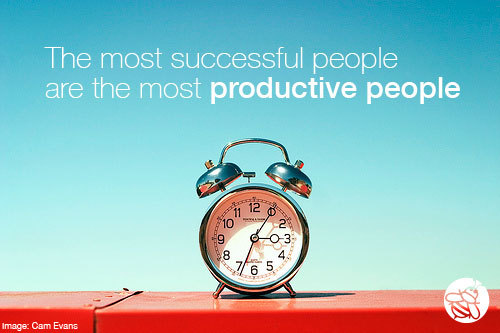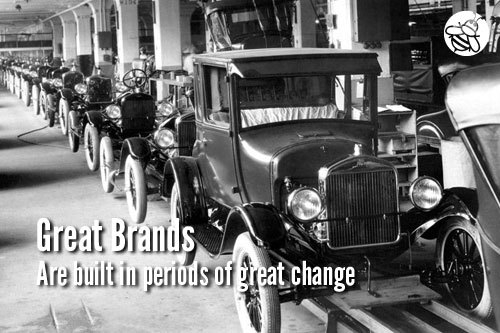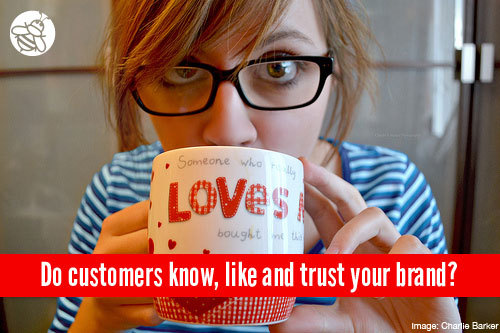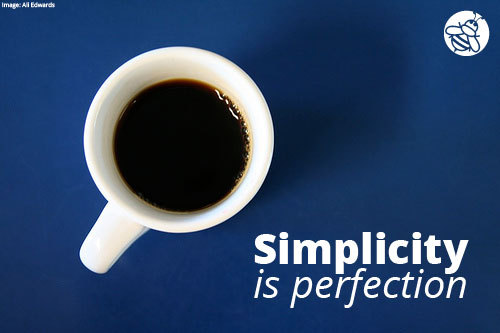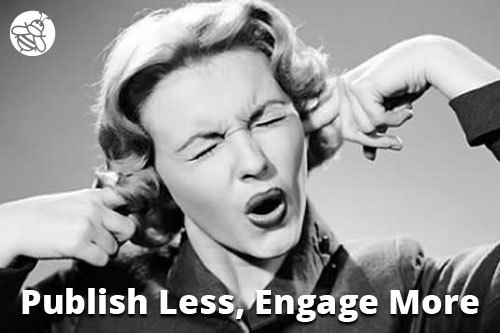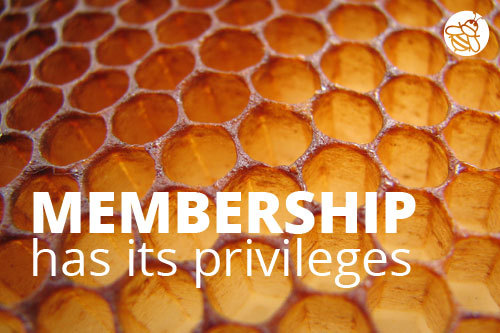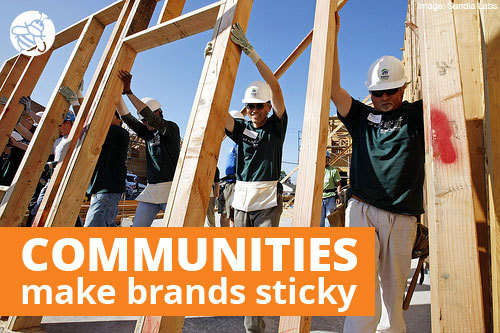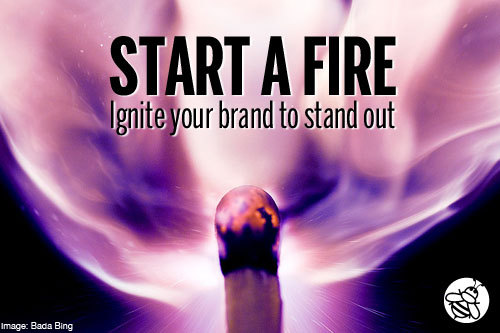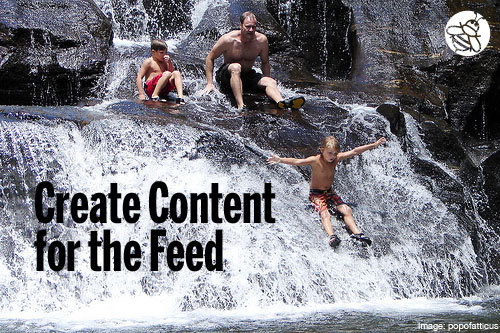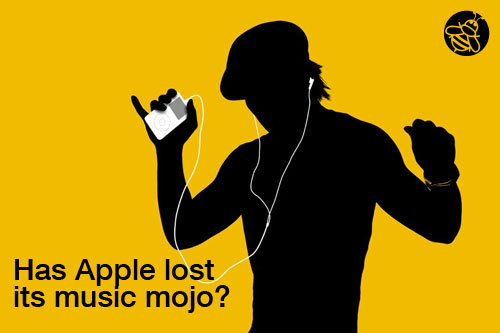Jeremy Miller's Blog, page 33
December 10, 2015
The ROI of Time — Cull the Busy Work
Busy work is the antithesis of extraordinary results.
According to Ron Wince, an expert in continuous improvement, “Forty-five to fifty percent of what a company does is a waste. These are systems that do not bring value to customers, nor do they drive revenue or cut costs.”
Said more succinctly, 45% to 50% of an organization is busy work. If this is the average, your opportunity is immense.
“The most successful people are the most productive people,” says Gary Keller, author of The One Thing. “Productive people get more done, achieve better results, and earn far more in their hours than the rest.”
How can you invest your time more strategically to achieve your personal and business goals?
What’s your One Thing?
Time is one of the biggest obstacles of success. You can’t manufacture it, but you can squander it.
In October I hired a salesperson, Melissa, to help me grow my speaking business. A few weeks into her role it became evident to me that the biggest obstacle to Melissa’s success was time. Busy work such as data entry, internet research, and weak or undefined processes were hampering her performance.
As a manager I take responsibility for the success of an employee. I expect each person to perform, but I have to create the conditions for success:
Clearly defined expectations
Effective tools and training
Coaching and management oversight
Instead of getting into an exhaustive study of our sales process, I took a page from the book, The One Thing. I asked, “What’s the one thing my salesperson needs to do?”
It’s a powerful question, because it forces you to get to the heart of the issue. You don’t need to optimize the 45% to 50% of systems that are busy work. You just have to optimize, elevate, or clear space for the strategic people on your team do their one thing.
Return on Activity
Look at your work through a return on activity lens.
Keller argues, “If money is a metaphor for producing results, then it’s clear — a time-managing system’s success can be judged by the productivity it produces.”
When you look at the work your team is doing through the money lens it brings everything into perspective:
What activities deliver the most profit?
What activities deliver no return, but are necessary for the high value activities to be performed?
What activities are costing you money?
When I applied this lens to my business it lit a fire under my ass:
We’re streamlining our CRM and reporting systems.
We’re implementing a marketing automation system.
We’re challenging everything.
Evaluating activities through a money lens also makes it easier to make strategic investments.
As a small business owner I can be parsimonious. (It’s my favorite word. It means cheap to the point of miserly.) But quantifying time with a money metric makes it easier to invest in software and systems that will have a lasting impact on the business.
Cull the Busy Work
The successful continually cull the busy work, and prioritize the activities that deliver the highest return on activity.
Apply the test to yourself and your business:
What’s the one thing you do that delivers the most value to your company?
What’s the one thing your employees need to do above anything else?
What’s the one thing your company does that differentiates it from the competition?
Find your one thing and give it the space it needs to blossom. When you value your time as a money metric you can cull that 45% to 50% of waste that lingers in every company.
December 3, 2015
Great Brands Are Built in Periods of Great Change
If you ever had aspirations to grow an iconic brand, now is the time.
Great brands are built in periods of technological and social revolution. Many of the iconic brands that we know today were established between 1875 to 1925 — companies like Ford, IBM, Hershey’s, Coca-Cola, Kellogg’s, Philips, and 3M.
Over a third of the brands listed in the 2015 Top 100 Brands were founded during this era. It was a period of great innovation and entrepreneurial spirit fueled by advancements in manufacturing, transportation, and electricity.
Richard Rumelt, author of Good Strategy / Bad Strategy, explains, “In 1880, the trip from Boston to Cambridge and back was a full day’s journey on horseback. Only five years later, the same trip was a twenty-minute ride on an electric streetcar.” The streetcar is just one example of innovation in the late 1800’s, but with it came suburbs, commuting and new ways to work and live.
These massive shifts provided fertile opportunities for entrepreneurs to challenge the status quo and create wholly new methods of business.
You have a similar opportunity. Technology is shifting rapidly, and the conditions are ripe for business innovation.
The Uberization of Industry
“For the first time in history, the world’s leading experts on accelerating technology are consistently finding themselves too conservative in their predictions about the future,” writes Steven Kotler.
Kotler’s assertion is startling. Change is nothing new, but the pace of change is accelerating. This is both unnerving and exciting.
For example, how many cab companies saw Uber coming?
Once you’ve hailed an Uber car from your phone it’s hard to imagine looking for a cab on the side of the road. As a consumer, Uber is a logical form of transportation — it’s a natural extension of the devices we use daily. But for the cab companies their entire industry has been turned on its ear.
In less than six years Uber has transformed an industry.
Innovation Happens Through Application
Uber is a great example of how companies leverage technology to transform industries.
Uber can exist, because most consumers have a smartphone with access to high speed internet. It’s a service that builds upon readily available technology.
Uber’s fabulous innovation is not in technology, it’s in connecting. It created an ecosystem for independent drivers and commuters to connect with each other, and it provided the infrastructure for a commercial transaction to take place. Uber’s application of technology transformed the taxi industry.
The same phenomena took place one hundred years ago too. Entrepreneurs like Henry Ford and Milton Hershey took advantage of the available technology to make a remarkable impact.
Henry Ford democratized the car. He didn’t invent the car or gasoline engine. Ford created a management system to mass produce vehicles.
Milton Hershey made chocolate a treat for everyone. The “Hershey process” produces chocolate more cheaply than other chocolate making processes.
If you dig into the stories of the iconic brands from 1875 to 1925 you will find fascinating examples of companies that applied technology to transform industries. Rarely did these companies invent technology. Most of their innovation was in the application of it.
A New Way to Work
You have an opportunity to transform your industry and create an iconic brand. The tools and technology are all around you. The challenge is finding new and innovative ways to apply them.
Great brands are built in periods of immense change, because they discover new ways to serve their customers.
November 26, 2015
Do Customers Know, Like and Trust Your Brand?
Webinar: Learn how to create a First Choice Advantage for your brand. Join me for a free webinar hosted by Constant Contact on Tuesday, December 1 at 1pm EST. Sign up today.
Do your customers choose your brand first?
This question is the essence of branding. Branding isn’t about logos, or taglines, or colors. Branding is about forming a relationship with your customers — a relationship where they know your brand, they like it and trust it.
This relationship is what makes the brand sticky.
Marketing hype can wear off quickly, but a relationship becomes a bond. It helps to insulate your brand from the competition, because it gives your customers the comfort to know you will serve them well.
You Can Buy Trust, But Why?
You can buy a relationship, but it’s awfully expensive.
McDonald’s, for example, spent $988 million on advertising in 2013. Let me repeat that because it’s a shocking number. McDonald’s spent close to a billion dollars on advertising in one year to make you like them.
That investment accounted for 15.3% of the quick serve advertising spend for that year. McDonald’s spends a disproportionate amount on advertising compared to its competition, because advertising helps the company form a bond with its customers.
Relationships are built up over time and experiences. The more often a customer interacts with your brand — whether through advertising, in person experiences, content, or by using your products — the stronger the relationship can become.
The traditional approach to forming a bond with customers is through mass marketing and advertising, but that’s incredibly expensive. You can achieve a similar result by using widely available tools that are free, if not practically free. There is nothing stopping you from deliberately engaging your customers and building a likable brand.
Build Relationships Early and Often
A core tenet of Sticky Branding is the 3% Rule. The 3% Rule argues that at any given time 3% of your market is buying, the rest are not. (You can learn more about the model here.)
Most marketing dollars are focused on the 3% — customers that have a need and will make a purchase decision in the next 30, 60, or 90 days. Spending time and money to engage active prospects makes perfect sense, but it’s even more effective to target prospects who already know your brand, like it and trust it.
Establishing relationships with your customers early and often not only builds trust, it accelerates the sales process.
Sticky Brands take the relationship building piece of their marketing very seriously. What separates them from average brands is Sticky Brands begin building relationships upwards of 3 years before a client has a need for their expertise.
Constant Contact is a great example of this approach. Constant Contact is an email marketing platform for small- and mid-sized companies, and they are a company who walks the talk. The company is growing its brand through community building: sharing tools and ideas, sponsoring and hosting events, and working with local businesses.
The idea is to provide excellent resources and build relationships with its target market. And when a prospect has a need they call Constant Contact first, because they already knows the company, like it and trust it.
Your goal should be the same. Build relationships early and often so your customers call you first when they have a need.
Learn How to Grow a First Choice Advantage
Do you want to learn the tactics to create a First Choice Advantage for your brand?
Join me at 1pm on Tuesday, December 1st for a free webinar hosted by Constant Contact. I will explore this concept and share practical ideas of how you can accelerate your sales funnel by connecting with your customers early and often.
November 19, 2015
Simple Brands Are More Successful
Tim Cook, CEO of Apple, said, “This is the most focused company I know of, am aware of, or have any knowledge of. We say no to good ideas every day so that the company can keep its focus on a small number of areas.”
Tim then made the sweeping claim that Apple’s product line could fit on a conference room table, “and we had revenue last year of $40 billion.”
Tim Cook made these statements in 2010. The iPad had just been announced, and Apple was riding high from the success of the iPhone. Five years later Apple’s revenue has exploded by almost six times to $234 billion, but Tim Cook’s claim is still true. Apple’s product line can still fit on a conference room table.
Focus is a defining criteria to grow a Sticky Brand. The most successful companies in the world are highly focused.
Serve a Need Brilliantly
“The greatest brands make life simple,” writes Margaret Molloy, CMO of Siegel+Gale. “Think Google, Amazon, or even Dunkin’ Donuts. They cut through the clutter by delivering what consumers want, when they want it, without hassle.”
Each brand Margaret listed is immediately identifiable.
Google is known for search. It helps you find information and get directions. Sure, Google does more than that, but we know it as the place to go to find stuff. And this fits the company’s mission, “Organize the world’s information and make it universally accessible and useful.”
Amazon is the largest online retailer in the world. It’s where you go to buy anything. Amazon’s mission is “to be Earth’s most customer-centric company for four primary customer sets: consumers, sellers, enterprises, and content creators.” Amazon is brilliant at connecting people and companies to make purchases.
Dunkin’ Donuts is where you get a coffee and a donut. The company proclaims it is “America’s favorite all-day, everyday stop for coffee and baked goods.” Again, the brand is positioned to be universally understood and to serve a very clear need.
The simplicity of each brand gives it power. According to the Siegel+Gale Global Brand Simplicity Index, simplicity strengthens a brand in measurable ways:
63% of consumers are willing to pay more for a simpler experience.
69% are more likely to refer a brand that provides a simpler experience.
And most astonishingly, the top 10 brands of the Index have beaten the average global stock index by 214% between 2009 to 2014.
In a noisy world, focus and simplicity go a long way to drive competitive advantage.
Easy to Understand, Easy to Refer
The first Principle of my book, Sticky Branding, is Simple Clarity. Simple Clarity is the ability to describe your brand and what makes it unique in ten words or less.
Leading with Simple Clarity in the book was a deliberate decision, because if you’re going to read just one Principle it better be Simple Clarity. The reason is generalists are not fairing well in the digital marketplace.
Ryan Hanley says it more bluntly, “Google has killed the generalist … When a consumer goes to Google with their problem, question, or need they want THE BEST solution and they are pissed when a search result doesn’t provide the best solution. So Google doesn’t show anything other than what it believes to be the best solution.”
Your customers don’t have time to sort out your services and what makes them different. They don’t have the bandwidth or interest to do this level of research. They just want to work with a company that is easy to understand and makes their lives a little bit easier.
Companies that are very bold and deliberate in what they do stand out, and customers love them for it.
To position your brand answer three questions:
Your company is …
Your company does …
Your company serves …
Without adding any puffery or value propositions just answer each question with a short, factual statement.
Think like Google:
What is your company’s (or product or service) category? How do people understand what you do?
What services do you provide? What problems do you solve? When should a customer call you?
Who do you serve better than anyone else? If you were to just serve one group of customers who would they be?
The more clearly you can answer these questions, the better your brand positioning will be. You will have Simple Clarity and that’s what customers crave.
Take on the Giants with Simple Clarity
Simplicity and focus are driving innovation.
The most disruptive brands in our marketplace are very clear on what they do:
Uber gets you to where you want to go.
Spotify provides you all the music you want when you want it.
GoPro helps you capture moments that excite you.
Each of these companies are pioneering new industries (creating new categories and subcategories), and they do it with Apple-like focus.
Achieving this degree of focus and clarity is not easy, but it is a key ingredient to growing a Sticky Brand. The more simple you can make your brand the more competitive it becomes. It gives you a focal point to attack the giants of your industry, and it gives consumers a reason to come back again and again.
November 12, 2015
Publish Less, Engage More
There is too much content being produced. Nobody can keep up with it.
A friend of mine asked, “How do you keep up with Twitter when you follow 15,000 people?” I bluntly responded that I don’t. There’s just too much noise and clutter to make sense of the content people are sharing.
Every company is publishing and sharing content, but only a fraction of it is being seen. This is a universal truth in content marketing today.
What Happened to Conversations?
Social media started as a conversation tool. In the very early days of Twitter and Facebook you could connect with people from all over the world to talk.
There weren’t any social media tools to automate the process. It was simply like-minded people connecting and discussing ideas.
Somewhere along the line that was lost. The robots took over.
Companies have embraced social media management tools and marketing automation platforms, and as a results prospects and customers are being inundated content. It’s overwhelming, and it’s annoying.
More Content Won’t Work
In 2005 the metrics were way better. Every article I wrote generated a customer, and some articles generated dozens of customers. The return on content was incredible, but that doesn’t happen anymore.
Einstein said, “The definition of insanity is doing the same thing over and over again and expecting different results.” This is the wake up call for brand building online. More content and more automation will not make you more successful.
To stand out be contrarian: publish less and engage more.
Go back to the roots of social media. Instead of using the tools to automate your content marketing, use them to engage people. Look for people sharing ideas and reach out to them. Ask them questions. Spark a conversation.
It’s that simple. Engagement is contrarian in our current social media landscape. You can make your brand immediately stand out online if you can make a concentrated effort to listen and engage with people.
People Want to be Acknowledged
Engaging people as people is brilliant marketing.
It feels amazing when a company or a person reaches out to you online. To see that someone else likes your ideas is uplifting. To be acknowledged that you exist validates why you participate on social media.
This is a brand’s opportunity to stand out. Shift your resources from publishing content, and look for opportunities to engage. Listen, connect, and talk.
Brands are built by people, and Sticky Brands are built by people who deliberately engage their marketplace.
November 5, 2015
Membership Has Its Privileges
Across North America leaders of professional associations and nonprofits are facing a seismic shift:
Membership rates are declining
Event participation is waning
Recruiting new members is getting harder and harder
Belinda Moore, CEO of Australasian Society of Association Executives, writes, “A number of powerful generational, cultural and economic forces are colliding to create a perfect storm that will make the next 5-20 years some of the toughest ever faced by associations. Associations who don’t adapt face a slow decline into obscurity.”
Naturally, the idea of “membership” is being challenged. Pundits are arguing the membership model is dead, and people don’t want to pay dues to belong to an organization.
These are troubling times for associations and nonprofits, and I am concerned they’re not getting the right advice.
Membership is not dead. To paraphrase American Express, membership has its privileges.
Communities Grow Membership
Last week I spoke at the Canadian Society of Association Executive’s National Convention, and today I am speaking at the Chamber Executives of Ontario’s Annual Convention.
At both events I delivered a clear model for growing and scaling membership organizations: community.
Communities make brands sticky, and communities scale. But it’s bigger than that.
Membership organizations are experiencing a generational divide. Boomers join associations, young professionals join communities.
Communities are a natural extension of the digital world. Social media provides a vehicle to connect, participate, and learn — and you can do this all for free. No one needs to go to a networking event to meet their peers. You can do that every single day on Facebook.
This is the new reality of member based organizations. People don’t pay to join a group; they participate in a group of their peers.
Membership Is the Inner Circle
Membership still has a strong role within a community — it’s the inner circle.
People are happy to pay for services and connections that they value. This has been proven in the software industry with freemium products like Evernote, Hootsuite, MailChimp, and Dropbox.
Each of these companies offers a free service that can be widely used by everyone. For example, MailChimp is free to use for users with less than 2,500 contacts. The caveat is MailChimp includes its logo and branding on free accounts, and limits some features.
Freemium is a great way for users to try before they buy. Once they get addicted they can dive deeper into the service and unlock additional capabilities and features.
Membership organizations can adopt a similar mindset. Community building activities can have both free and premium options, but membership delivers an even higher value. By subscribing to the organization you unlock capabilities and benefits you couldn’t gain elsewhere.
Membership is not dead. Every premium subscriber to MailChimp is a member. This mindset unshackles an association to think differently about its business model and how it serves its members.
Challenge Convention
Saying “membership is dead” is a cop-out.
People will join associations and pay membership dues. If they enjoy the experience and the benefits that come along with membership they will happily pay. It’s that simple.
Membership is only one component of the community. It’s the inner circle.
Membership based organizations that thrive look beyond membership, and connect with members and non-members alike. They build a community that brings people together and provide them a reason to participate. And that community is what fosters the inner circle to grow and thrive.
October 29, 2015
The Law of 3&10: How Brand Communities Scale
A community transforms every time it triples in size.
The organization and expectations of a group of 30 people is very different from a group of 3,000 people.
The Hutterites, for example, naturally understand this principle and divide their communities when they reach 150 members. Malcolm Gladwell writes in the Tipping Point, “At 150, the Hutterites believe, something happens — something indefinable but very real — that somehow changes the nature of community overnight. In smaller groups people are a lot closer. They’re knit together, which is very important if you want to be effective and successful at community life.”
Understanding how communities grow and scale is very useful for branding. A community is one of the most effective ways to build relationships and scale your brand, because it unlocks the power of networks.
But community building is different from most marketing campaigns. A community thrives when its members are able to purposefully connect with one another.
The Law of 3&10
Communities make brands sticky, but growing a community can be quite challenging.
After I published my ebook, Nobody Likes To Dance Alone, I was asked frequently, “Why is my Sticky Branding LinkedIn Group so much larger than other groups?” I dug into the question by studying communities and membership groups, and I noticed a pattern: communities transform every time they triple in size.
The discovery led me to develop the Law of 3&10. The law argues that communities transform at logical points: 10 people; 30 people; 100 people; 300 people; 1,000 people; 3,000 people; 10,000 people; 30,000 people; 100,000 people; etc.
Every time a community triples in size the infrastructure and organization of the group shifts. For example, a group of 10 to 30 members can self-organize, but a group of 100,000 members requires a clearly defined shared purpose with defined methods of contribution.
This is an important model for marketers to understand. To grow an engaged brand community is an evolution. The tactics and systems that get you off the ground won’t carry your brand forward into a national or international community.
The law also explains why some communities plateau and falter. When a community outgrows its infrastructure the individuals become isolated, because they do not have clear opportunities to participate in the group.
A community thrives when it’s built to serve its members.
Communities Are a Collection of Tribes
The 150 Rule of the Hutterites is an interesting application of the Law of 3&10.
When a group grows beyond 150 members personal connections begin to naturally divide into subgroups or cliques. The Hutterites avoid the symptoms of cliques by dividing once a community reaches 150 members. They’ve institutionalized the process through shared values and organizational principles to sustain close, personal bonds.
The Hutterite structure leads to multiple levels of community:
The broad community of people who self-identify and organize as Hutterites
Regional or local communities that interact with one another
The community, the group of 100 or so people who live together in close proximity
When you examine large brand communities you will see a similar dynamic. Large communities are organized by smaller tribes: chapters, events, projects, discussions, or something else.
Habitat for Humanity creates participation by focusing members on construction projects. Some construction projects are larger than others, but they are never vast. Every member of the build team has a role, and everyone has an ability to make a meaningful contribution to the community and its objectives.
For communities to thrive there have to be clear bonds amongst its members. There is no way a person can know 10,000 people, therefore the community has to fracture into smaller groups — tribes.
Focus on Participation
Communities make brands sticky, because they support participation.
Most marketing and advertising is passive. Content is created, promoted, and consumed. But communities require action. Members gain value from the community because they get to participate in a group they identify with.
The Law of 3&10 provides a model on how you can examine your brand community:
Is the community organized to foster personal connections?
Is the community organized for every individual to participate in a meaningful way?
The larger your brand community grows the more you have to consider how your infrastructure and resources facilitate member participation.
October 22, 2015
Start A Fire
It’s hard to ignore an energized brand.
You may have never used Uber’s services, but I’m sure you’ve heard of the company. The Uber brand is everywhere. The company is transforming the taxi industry, which has been nothing short of polarizing.
Cab companies have been protesting in the streets, but commuters are flocking to the service. Uber has lit a fire and everyone can see it.
Energy is one of the most important differentiators for a brand. If you want your brand to stand out, start stoking the fire.
Brand Energy Drives Differentiation
Companies that start a fire radiate energy and excitement. And these are the companies that are becoming the most successful brands in the world.
On the other hand, brands that lack energy are not faring well.
According to the Brand Asset Valuator (BAV), brand equity has been falling sharply over the past decade. BAV measures over 40,000 brands from more than forty countries, and its measures of trustworthiness, esteem, perceived quality, and awareness are all in decline.
Trustworthiness declined nearly 50%
Esteem declined 12%
Perceived Quality declined 24%
Awareness declined 24%
These numbers indicate how hard it is for companies to stand out in our media saturated and overcrowded marketplace. There’s so much going on that customers can’t keep up and they are simply tuning out.
A brand on fire bucks these trends. BAV is redefining “differentiation” to “energized differentiation.” New features and capabilities are not enough to engage customers. It’s the energy behind the brand that amplifies the things they do uniquely.
Ignite Your Brand’s Fire
Every company has a spark. The fire is there, but it just might not be visible.
You can start a fire in your company in three core areas:
Culture: An engaged team with a higher purpose is exciting. Their passion and energy is infectious. You can feel the heat of the brand, because the people are so dynamic.
Innovation: Customers love to see “what’s next.” It’s exciting to see an industry evolve, and it’s exciting to work with a leader that is changing things for the better. Uber is on fire because it’s clearly transforming an industry for the betterment of its customers.
Community: Doing good matters. You can ignite your brand by supporting or sponsoring the right cause. A well aligned sponsorship demonstrates your brand’s purpose, and it gives a cause for your employees and customers to rally around.
Culture, innovation, and community are all sources of energy, and they all come from your people. Energy isn’t manufactured in a marketing campaign. It’s harnessed and amplified from the work you do — either internally or externally.
Start with the areas your company already demonstrates energy and stoke it into a fire. Give it the resources, attention, and purpose to turn a hot coal into a wildfire.
Your Brand Needs Energy
In an overcrowded market you’ve got to do more than deliver a good product at a fair price. You’ve got to inspire customers by starting a fire.
Failing to start a fire can be detrimental for your business. David Aaker, author of Brand Relevance, argues, “When a brand lacks energy and visibility, it can move into the ‘graveyard,’ … Being a graveyard brand is a substantial handicap because it is hard to generate interest in a brand when the audience assumes that they are already familiar with it.”
Energy is internal. It’s the fire that burns within your company to serve, innovate, and do something remarkable. Harness that energy.
October 15, 2015
Getting Your Content To Spread
It’s very clear to see. Human beings are social creatures.
On August 27th Facebook crossed an incredible milestone: one billion people logged into Facebook in a single day.
Mark Zuckerberg wrote, “We just passed an important milestone. For the first time ever, one billion people used Facebook in a single day. On Monday, 1 in 7 people on Earth used Facebook to connect with their friends and family.”
He continues, “A more open and connected world is a better world. It brings stronger relationships with those you love, a stronger economy with more opportunities, and a stronger society that reflects all of our values.”
With the rise of social media we live in a golden age of communication. You can meet and connect with people from all over the world. You can build relationships, and generate referrals for your business. It’s truly a remarkable time to be in business.
Being heard, on the other hand, is becoming a lot more challenging.
Lost in the Social Media Feed
Facebook’s massive growth highlights a reality of content marketing today. It’s where people go to consume content.
Users are logging into their preferred platform — whether it’s Facebook, LinkedIn, Twitter, Instagram, or something else — to get their daily dose of content. Posts are curated and served up by your network and by the advertisers trying to reach you. And for the vast majority of users this flow of content works just fine.
As Mitch Joel points out, “The half-life of a blog post is tragic. People used to catch up on their blog reading over a weekend, now we’re all consumed with our feeds. So, come the weekend, whatever is in the feed wins.”
Create Content for the Feed
In the good ol’ days of content marketing — you know 2004 to 2007 — a business could rely on a few content channels: blog, email newsletter, and a social network or two.
That’s just not a sound strategy anymore.
“It’s not about blogs these days, it’s about blog posts,” says Jay Baer. “The day-to-day audience that reads a particular blog every day, fed to them by email and/or RSS, is fading away. Instead, we have enormous competition to create ‘hit’ blog posts that break out and find a larger-than-usual audience, fueled by social media and search engines.”
Creating hit posts is elusive. A thought provoking article with a catchy title may do well, but the feed also plays a large role in how far the article will spread.
Creating a hit requires understanding the audience in a given feed:
Who are your connections on LinkedIn versus Facebook?
What types of content resonate most in that feed?
Who are the influencers you can poke and engage offline to get them to share your content?
You are more likely to create content that spreads if you write for that feed.
Post Directly into the Feed
Your blog may be holding your content back.
If you want your content to travel post it directly into the feed. LinkedIn and Facebook both provide tools to share long form content: LinkedIn Pulse and Facebook Notes. Content posted directly into the feed goes further than a link to your blog.
I have been experimenting with LinkedIn Pulse articles for over a year, and I am always surprised by how far they go. My post, “Stop Hiding Behind Email. Pick Up The Phone“, generated 361 Likes and 67 comments. This is far more interaction than I would generate on an average blog post.
I am not advocating that you stop blogging or posting content on your website, but I don’t think you should ignore LinkedIn Pulse or Facebook Notes. These platforms connect your content directly to the feed.
Content Is Everywhere
The irony of the new social media landscape is your audience is both fracturing and coalescing at the same time.
Content is everywhere. Actually, we’re drowning in it. Every corner of the internet is chock-full with a continuous supply of new ideas, pictures, videos, and stories. As a result, people are selective about what they consume in each of their feeds. And users move on if a post is not immediately captivating.
Even though content is everywhere you know where your audience will be: one of their feeds.
The key to getting your content to spread is to create content for the feed. Choose the platform you want to engage, and build a strategy to make your content resonate within it. This doesn’t mean every post will take off. What you’re trying to do is improve the odds so that your content will spread.
October 8, 2015
Why Apple Music Is Losing to Spotify
“There are two ways to compete in existing markets—gaining brand preference and making competitors irrelevant.” -David Aaker, Brand Relevance
The “my brand is better than your brand” approach to marketing is not effective. Competing on features, benefits, and brand awareness can only take your brand so far. In this technologically charged marketplace innovation trumps marketing.
Companies that stand out — companies like Tesla, Uber, Airbnb, and Spotify — are developing new categories and subcategories. These companies aren’t trying to replicate or out market direct competitors. They are attempting to develop new industries and new approaches.
Challenging the status quo goes by many names and strategic frameworks. Books like Brand Relevance, Blue Ocean Strategy, Start With Why, or The Innovator’s Dilemma all lead people in the same direction: pioneer with purpose.
W. Chan Kim writes in Blue Ocean Strategy, “Blue ocean strategy challenges companies to break out of the red ocean of bloody competition by creating uncontested market space that makes the competition irrelevant. Instead of dividing up existing—and often shrinking—demand and benchmarking competitors, blue ocean strategy is about growing demand and breaking away from the competition.”
Apple has grown into one of the largest, most profitable, and most admired brands in the world because of its ability to develop new and uncontested markets. According to David Aaker, Apple is the only company to create five new categories or subcategories in less than a decade — the iMac, iPod, iTunes, iPhone, and the iPad.
Apple’s track record of innovation and developing new categories is why Apple Music is such a phenomenal letdown. Apple forgot that success comes from challenging convention, not challenging competitors.
Purpose Drives Innovation
Apple was once the pioneer of digital music. Under Steve Jobs’ leadership, Apple revolutionized the music industry and made buying digital music easy and accessible for everyone.
When iTunes launched Apple was challenging two major forces in the music industry:
Consumers wanted digital music, but the only way to get it was by stealing it with tools like Napster and Kazaa.
The music industry was slow to adopt digital music, because it was too addicted to CDs as a cash cow.
Apple saw those two forces as an opportunity to transform the music industry. Steve Jobs said, “We believe that 80% of the people stealing stuff don’t want to be, there’s just no legal alternative. So we said, ‘Let’s create a legal alternative to this.’ Everybody wins. Music companies win. The artists win. Apple wins. And the user wins, because he gets a better service and doesn’t have to be a thief.”
Apple challenged the status quo to create iTunes and the iPod. It created a new and better way for consumers to buy and listen to music.
Apple Music, in contrast, is not challenging the status quo. Apple Music is a competitive play to avoid losing relevance and market share to Spotify and other paid streaming services.
Customers Want More Than Better
Apple Music entered the paid streaming music market with a few functional benefits:
Access to exclusive artists like Taylor Swift, Dr. Dre, and Nine Inch Nails
Human curated playlists
Live radio station with Beats 1
Social network to connect with your favorite artists
Bright, colorful user interface
Apple was so keen on the platform that they offered consumers ninety days to try Apple Music for free. According to Apple, 11 million users signed up for the trial period.
I gave Apple Music a serious evaluation. I cancelled my Spotify account, and used Apple Music exclusively for three months. But when it came time to pay for Apple Music, I bailed. I renewed my premium subscription with Spotify, and it feels great to be back.
Compared to Spotify, Apple Music does not have enough to keep me. I enjoy Beats 1 and I like its curation engine, but apples to apples I prefer Spotify.
Influential music industry analyst, Bob Lefsetz, writes in a sizzling rant, “Apple Music does the one key thing lousily… And that’s play music. All the curation, all the b.s… Just let me play my tunes. And give me comprehensible playlists. Even better, give me a comprehensible interface… I’ve abandoned Apple Music. And I’m not the only one.”
Lefsetz’s rant cuts deeply. It almost reads as if he was disappointed by a close friend. And that’s how many consumers, especially Apple fans, are feeling. They’ve become used to Apple coming out with extraordinary category innovations, but Apple Music is an also ran service with a user interface that is best described as a “hot mess.”
Mark Bonchek sheds a key insight into why Apple Music is a letdown. In his Harvard Business Review article, “Why Apple Missed a Beat”, he writes, “Apple, like most companies, updated its technology without updating its thinking. These days, if you want to shift your market, you first have to shift your mindset.”
Bonchek goes on to say, “Apple’s mindset is still stuck in early (and successful) days of iTunes. It treats music as content to be distributed rather than an experience to be shared. It doesn’t matter if the music is downloaded or streamed. The problem is that Apple Music is still a distribution channel rather than an experiential platform, a collaborative community, and an artistic accelerator.”
Spotify is the category innovator of paid streaming music, and Apple Music is reinforcing Spotify’s position. Daniel Ek, CEO and founder of Spotify, said, “Apple has validated the thing that we said 10 years ago. The world is moving to streaming.” Ek also revealed that since Apple Music debuted sign-ups to Spotify have accelerated.
Spotify’s purpose is clear. It’s “growing the category of streaming.” By building and evangelizing a new category Spotify is the one growing a Sticky Brand.
Did Success Stunt Innovation?
It’s interesting to reflect on Steve Jobs’ words when examining Apple Music.
Steve Jobs wrote, “I have my own theory about why decline happens at companies like IBM or Microsoft. The company does a great job, innovates and becomes a monopoly or close to it in some field, and then the quality of the product becomes less important. The company starts valuing great salesmen, because they’re the ones who can move the needle on revenues, not the product engineers or designers.”
He concludes by stating, “When the sales guys run the company, the product guys don’t matter so much, and a lot of them just turn off.”
The product innovation that made iTunes and the iPod so great are lacking in Apple Music. Apple dove into a red ocean and tried to buy consumer preference through marketing and its large user base.
I’m not using Apple Music right now, but I haven’t given up on the service. Apple still has an opportunity to create a new subcategory in paid streaming music. It has the ecosystem, technology, and products to create a new experience for music.
For example, imagine the possibilities of a tactile music experience:
Playlists that are based on your heart rate pulled from your Apple Watch
3D Touch on your iPhone providing the vibrations of the music you’re listening to
Siri providing pictures and moments from your photo library that reflect the mood of a playlist
The positioning of the original iPod provides an insight into what Apple Music could actually become.
(Can’t see the video? Watch it here.)
The original iTunes+iPod ads reinforced the experience of music. The ads demonstrated the emotion and energy that music can bring to your life. That purpose is missing in Apple Music, but that purpose can be rekindled and harnessed to create a new category of music.
If Apple can unchain its product guys and let them reimagine the music industry, Apple Music can once again redefine music. Until then I’ll keep listening to the new category leader, Spotify.

